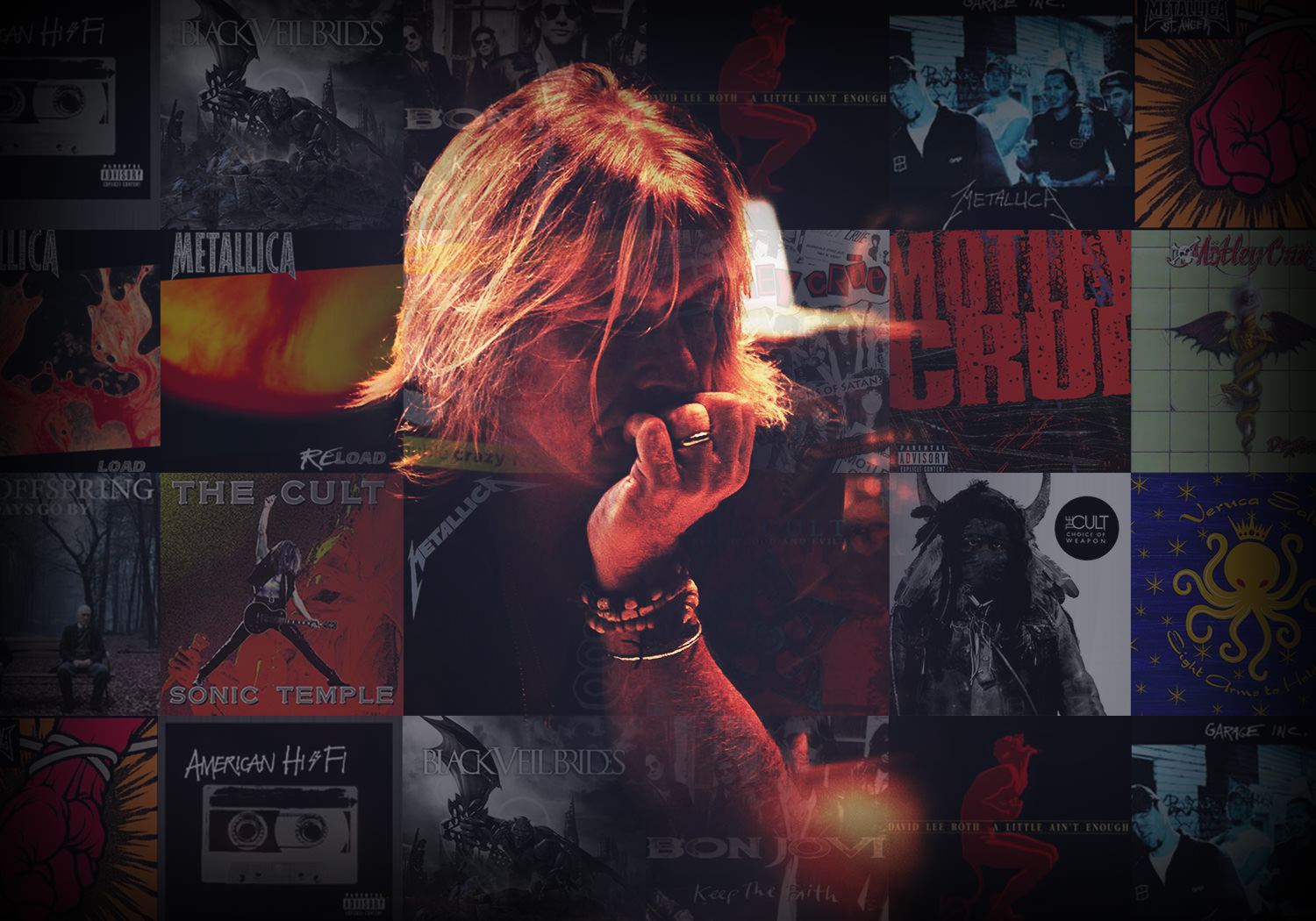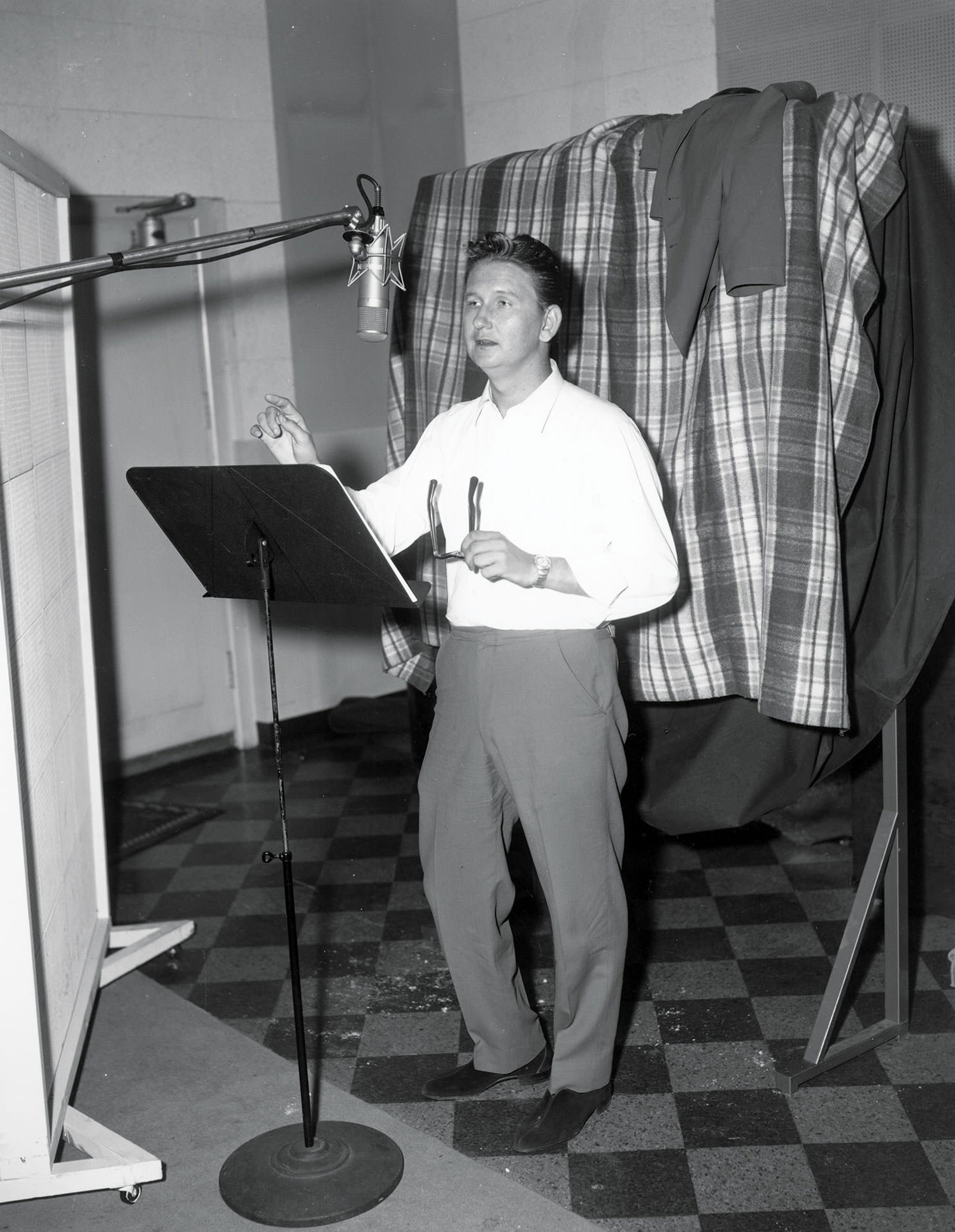M/S Done Different
I've always been a fan of big "stereo-y" sounds, but it's been kind of difficult to get them recorded in a way that translates well on different systems and sounds decent in mono. I've come up with an interesting technique that works really well at getting some bizarre stereo fields and is totally mono-compatible. This is based on the Mid/Side (M/S) technique.
M/S uses two mics, one figure-8, the other usually cardioid. The figure-8 mic is the "Side" mic, it is turned so that the front and back are running parallel to the source, therefore the front and back act as the left and right. The cardioid mic, the "Mid" mic, faces forward towards the source (perpendicular to the side mic) and picks up the sound in mono. The two signals are sent to a circuit called an "M/S Matrix". The matrix takes the signal from the side mic and splits it into two. It reverses the polarity of one of the signals and mixes it back in with the original with the two panned left and right. The reversing of the polarity "decodes" the front and back of the figure-8 diaphragm into two different signals — left and right. The mid mic is then mixed in and panned center. The mid mic has to be added because the left and right signals are reverse polarity of each other, and therefore, totally cancel out in mono. The mid signal not only solves that problem, but since it is the only signal present in mono, it assures that there will be no phasing problems. Pretty clever.
Here's my take on it. Use the two mics as usual, but who said that you have to set them up the "normal" way? I like to use this technique on guitar amps. I'll set the cardiod mic close up to the speaker in the usual manner, then I'll put the figure-8 mic further back with the front facing towards the amp and the back facing towards the room. I don't use a standard M/S matrix to decode all this. I just work with the discrete tracks, this gives me more mixing flexibility for possible strangeness. I treat it as three tracks, the up close mic is one, the front of the figure-8 is another, and the back (the polarity reversed) of the figure-8 is the third. I then pan and mix these however I think sounds cool, though usually the figure-8 stays hard panned because it disappears the closer they are to the middle. The effect of this is pretty interesting: you get the straight up-close amp sound, a slightly more distant sound, and a very distant ambient sound, all with two mics and the sound stays totally tight and focused in mono.
Another setup I did that turned out well involved an acoustic/electric guitar. We plugged the acoustic into an amp and mic'd that with a cardioid mic. The amp was open-backed and I had the guitar player sit a few feet behind the amp on a stool. Then, I put the figure-8 mic with the front facing the soundhole of the acoustic and the back of it facing the back of the amp. The result was a close-mic'd electric sound, a close acoustic sound, and a strange ambient mix of the two. It sounded like he had overdubbed several different guitar parts, but it was all just one take!
Stereo Phase Shifting From A Mono Pedal
I love Electro-Harmonix Small Stone pedals. They have got to be one of the coolest phasers ever. My only complaint is that I wish they were stereo, I would love to hear that fat swooshing panning around in my headphones. Fear not! You can get it, you just have to be creative with mic'ing the amp. It's quite simple actually, just put two mics on the amp, one up close and another two or three feet away. Now, pan those mics hard left and right. Does the sound pan across as the phase goes through it's sweep? If it doesn't, start moving the distant mic closer or further until you hear the sweep pan across, it will eventually.
This also works well with flangers or just about any effect that is being modulated by some kind of LFO [low frequency oscillator]. The reason why this works is because of the time delay between the two mics. While the sweep is at one position on the close mic, it won't be at that position on the other mic until several milliseconds later. That doesn't seem like much of a difference, but it's enough to cause substantial phase differences between the two microphones, which gives the fun panning effects. You could also try close-mic'ing the front and back of the speaker in an open-backed cabinet. The signals from the front and back of the speaker are opposite polarity of each other, so hard panning the mics has the potential for some more fun panning as the phaser sweeps. One thing to be careful with these techniques is that, unlike the pseudo M/S technique described above, they are not necessarily mono compatible, so watch out.
I hope this gave you some good ideas for creative stereo mic'ing. Please experiment and come up with some of your own or maybe improve on these. If you find something cool, let us know here at Tape Op!





